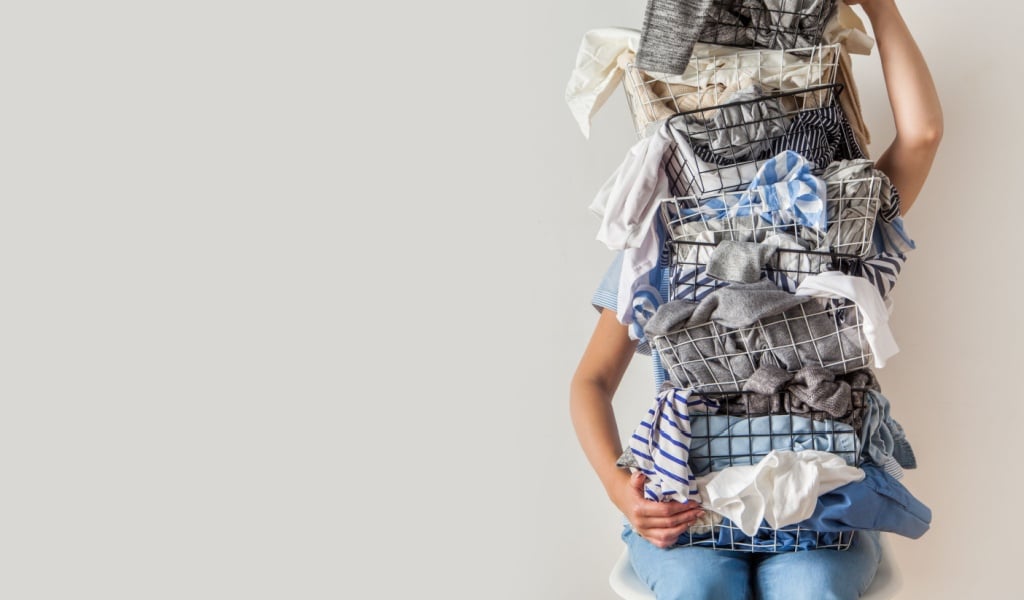“Swedish Death Cleaning” sounds like an episode of the European version of Squid Game. But despite the creepy name, it’s neither violent nor dark. It’s a beautiful, life-affirming idea that’s spreading across the world, accompanied by cardboard boxes, sentimental souvenirs, and a determination to clean your environment.

Evolving from Sweden’s practical, no-nonsense culture, döstädning (a blend of the words dö (death) and städning (cleaning) is a decluttering procedure that aims to organize your life and belongings before your death. However, don’t freak out at the word “death”. Consider it more of a sensible, highly personal spring cleaning that provides emotional closure during the procedure.
So, why should you care? And should you begin this procedure long before you’re eligible for retirement? Let’s break this down.
The Kind Concept Behind a Fierce Name
Margareta Magnusson promoted the concept of Swedish Death Cleaning in her popular book, “The Gentle Art of Swedish Death Cleaning.” According to Magnusson, a Swedish artist who describes herself as being “somewhere between 80 and 100,” the practice is a favor to the living and not a problem for the dying.
Swedish Death Cleaning is a considerate and proactive method that reduces the emotional and logistical trauma your family might face after your passing. It’s not about worrying over death but about living to the fullest, with fewer needless things in your way and finding satisfaction with your belongings.
And it turns out that it’s not limited to the old!
Simple Steps for Swedish Death Cleaning
1. Begin Easy
Start with items that don’t hold deep emotional value, like old clothes, kitchen gadgets, or the pile of instruction manuals you’ve never read. Build your decluttering “muscle” slowly
2. Sort by Category, Instead of Room
This technique enables you to tackle specific groups of items (such as books, electronics, and tools) and helps avoid the trap of half-cleaning, which accomplishes nothing!
3. Have a “Maybe” Box
Sometimes, you can be uncertain whether to throw something. That’s okay! Make a temporary “maybe” box and check it after a few weeks or months. Often, the emotional hold fades over time.
4. Record What’s Significant
Take pictures or write down the stories of sentimental things to honor the memory without taking up physical space. Magnusson even proposes creating a “throw-away box” filled with things that hold meaning for you. It’s a clever method of accepting that not every memory needs to be carried on.
5. Arrange Essential Documents
Keep important documents, such as wills, insurance information, passwords, and financial papers, in one safe and accessible place. This part might not be fun, but it can save your family from serious issues later.
6. Organize Your Digital Life
Declutter your digital life, too. Organize files, delete unnecessary information, and consider what you want to happen to your online presence after your passing. Tools such as digital wills and password managers can assist you in setting these up.
Why Is the Youth Boarding the Döstädning Train?
This approach has found support from millennials and Gen Zers who are struggling with the effects of late-stage capitalism, maximalism, and the Marie Kondo effect. For youngsters, Swedish Death Cleaning is a refreshing shift from mindless consumption to intentional living.
Their question is: “Why wait until the end of life to clean up when I can improve my life right now?”
Decluttering your belongings doesn’t just increase your closet space; it clears your mind, improves concentration, and helps you consider what truly matters. Swedish Death Cleaning provides a gentle and more sentimental alternative to the “get rid of it if it doesn’t spark joy” rule. Reflection and thoughtfulness are significant here.
The Hard Stuff: What About It?
Things such as photographs, handwritten letters, childhood drawings, and items you received from your grandparents are the toughest things to deal with, not because of their function but because of their sentimental value. Swedish Death Cleaning doesn’t advise you to discard all sentiments. Instead, it encourages you to choose what holds real value and helps pass it on with intention.
Do your kids want the box of antique dinner sets? If not, perhaps someone else would appreciate it. Is there a photo album you value? Consider digitizing it and sharing copies with family.
The objective is to keep the essence of memory, not the litter of the past.

The Weight of Sentimental Values
We don’t only collect physical objects here; we also collect emotional objects, such as old birthday cards from friends you no longer talk to, clothes you keep “just in case,” and photographs of past relationships.
Through Swedish Death Cleaning, we’re advised to ask ourselves: “Why am I keeping this? Am I keeping this since I value it, or because I feel guilty throwing it away?”
Magnusson’s advice is gentle and nonjudgmental. She recommends starting with items that are easier to discard, such as kitchenware or old electronics, and gradually moving toward more sentimental categories, like photographs, letters, or heirlooms. Remember, this is a marathon, not a 100-meter race!
Swedish Death Cleaning Is Not Minimalism
Swedish Death Cleaning and minimalism are not the same thing.
We are often encouraged by minimalists to live with as little as possible. However, the goal of döstädning is to preserve what is essential, whether that be two or thirty photographs. It’s not about reducing your life to a one-succulent flat with white walls but about structuring your life so that the objects in your immediate environment reflect your circumstances, needs, and principles.
Why Is This Necessary? (Even If You’re Far from Retirement)
Swedish Death Cleaning offers a considerable amount of freedom. It helps you relieve yourself and others of the weight of “stuff.” Death is imminent, and though no one likes to think about it, you never know when it will be your time. While the goal of Swedish Death Cleaning isn’t to scare you of your mortality, it is a reality we all have to come to terms with. Imagine providing your family with clarity, guidance, and a lasting legacy of thoughtfulness rather than leaving them with a house full of odd items to sort through during a time of loss.
Beginning this procedure, even by those in their 30s or 40s, can be empowering. It encourages thoughtfulness, fosters awareness, and helps us confront the complex relationships we have with our belongings.
The Art of Simplifying Life
Ultimately, Swedish Death Cleaning isn’t about dying; it’s about how you decide to live. It’s about looking at your life through the lens of your possessions.
Yes, the name may sound violent. Perhaps that’s part of its magic! It grabs your attention and makes you wonder. In a world where we’re continuously pressured to buy more, collect more, and hold on to more, the silent revolt of letting go is more radical and essential than ever.
Therefore, Swedish Death Cleaning is not a violent process. And it might just be the most effective method to ease your life!



